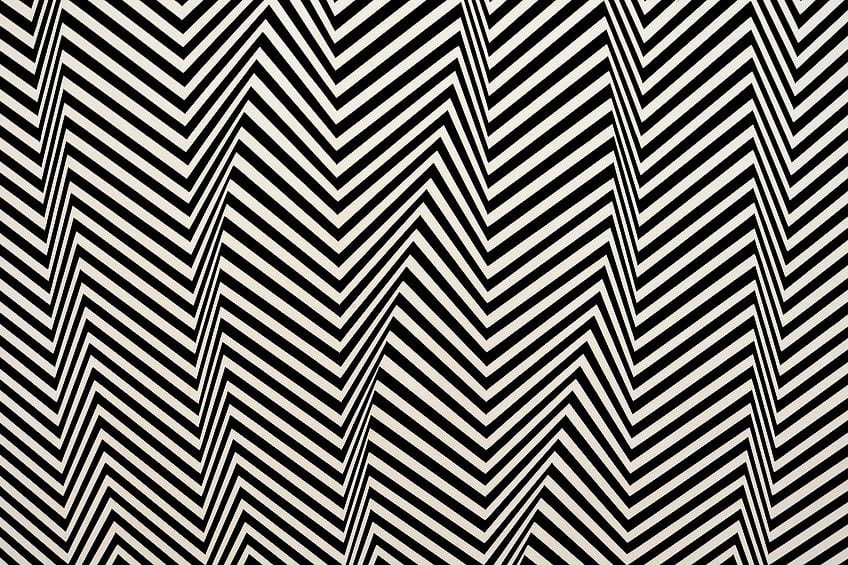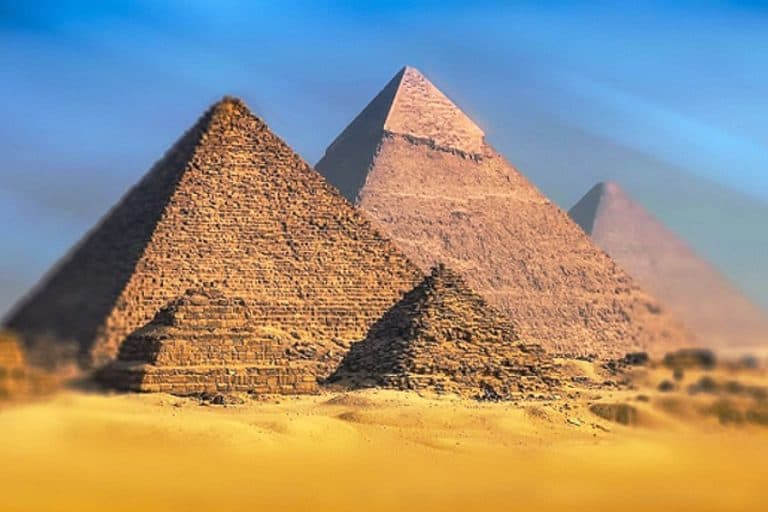Illusion Art – Trompe-l’oeil, Hyperrealism, and Visual Trickery
Illusion art, also referred to as Illusionism art, is a form of optical illusion within the art world. It is clever, playful, and particularly unique as an art genre. There is never a dull moment when looking at any type of illusion paintings! This article will explore this art form from its roots in the Renaissance all the way to its depictions on pavements.
What Is Illusion Art?
Illusion art, although it seems like a modern art form, has its roots in older forms of artwork dating back to the Classical times of Greek art, and has since evolved over time with new techniques to form a 3D Illusion art genre. Below, we look at the Illusion art definition and a brief historical overview of how Optical Illusion art started.
An Illusion Art Definition
The word “illusion” is derived from the Latin word ludere, which means “to play,” although the word has a history of its own, coming from other meanings like “to mock”. Over time, the word evolved into what we typically associate with it today, and that is to play or trick our senses with optical illusions.
This is what Illusionism art is all about. It is often the depiction of an object on a flat, two-dimensional surface, but from the right angle, it appears to be three-dimensional.
The rendering of the objects, still lifes, or scenes is in a three-dimensional manner that makes it appear real. This applies similarly to sculptures too, which are sculpted in such hyper-realistic manners that make them appear as if they will move at any minute.

Historical Overview of Illusion Art
Illusionism art can be found on the earliest fresco mural paintings seen in Greek homes in the forms of still lifes, in various scenes of people, and in paintings that appear almost a part of the real architectural structures of the interiors.
A famous classical example is found in the book Natural History (77 AD) by the Roman author and philosopher, Pliny the Elder. In it, he describes a contest between two famous Greek painters, namely, Zeuxis and Parrhasius of Ephesus. Both artists wanted to see who the best was, so Zeuxis painted grapes that appeared so real that even birds wanted to peck at them. However, when Zeuxis asked Parrhasius to remove the curtain that was covering his painting, he then realized that the curtain itself was the painting. Thus, Zeuxis admitted defeat – he may have fooled birds, but Paarhasius had managed to fool Zeuxis himself.
This story has been utilized as an example to illustrate space and illusionism, and the act of Parrhasius “deceiving” Zeuxis is an example of the Illusion art definition.

If we look at later examples from art history, we will also see Illusionism art was prominent in ceiling paintings. During the Renaissance period, this style of painting rapidly developed, and artists created new techniques alongside new media like oil paints to enhance all illusionistic effects, whether on a ceiling or on a wall.
There was a surge in new discoveries with regards to perspective and proportions, notably linear perspective, which was pioneered by architect, Filippo Brunelleschi, during the 1300s and 1400s. He studied lines and the spatial relationships between objects and buildings.
This can be viewed as an important part of the development of Illusionism art because it allowed artists to play around with space and depth not only in their paintings but in sculptures and architecture too. It allowed a new understanding of how space is depicted in the subject matter, making it appear as realistic (or hyperrealistic) as possible.
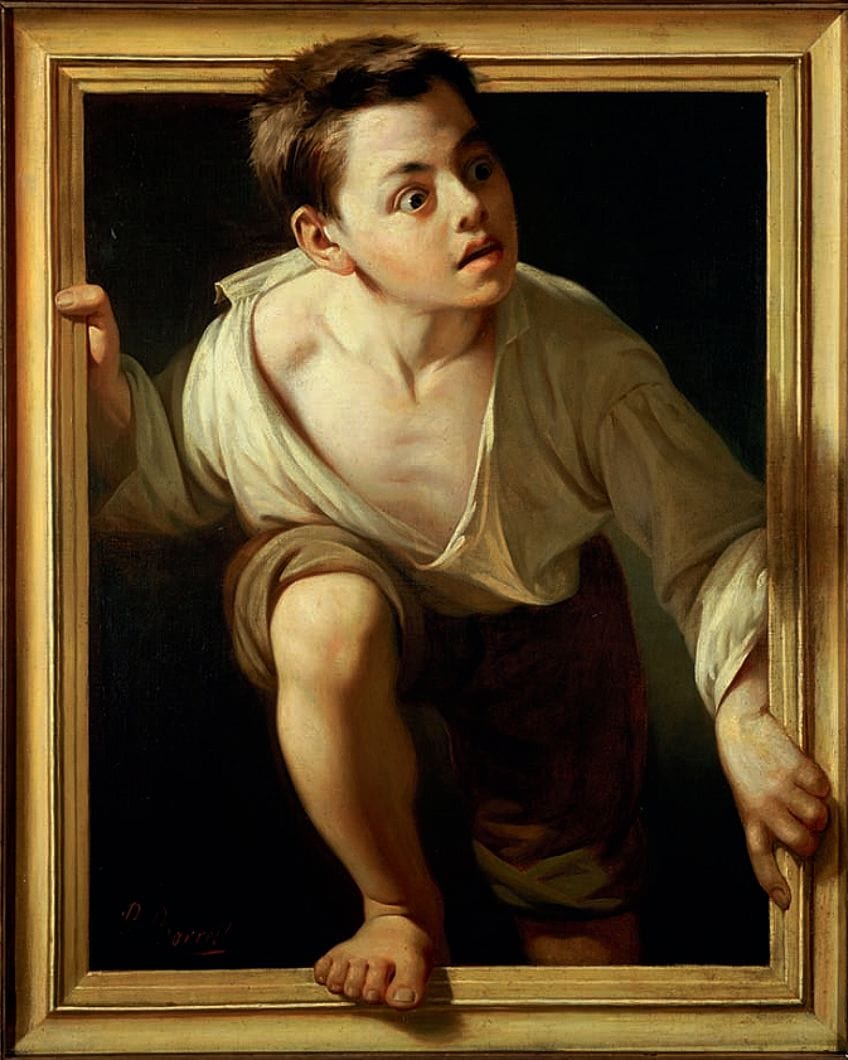
Other techniques that emerged during the Renaissance period were trompe l’oeil, which is a French term meaning to “deceive the eye”. This concept is a key part of Illusion paintings in that it is used to portray three-dimensionality on flat surfaces. There is also a similar technique known as quadratura, which means to “open up” architectural spaces like ceilings.
Although these techniques were mastered during the Renaissance period, they have existed since the Classical Greek and Roman mural paintings, which depicted objects or architectural structures that appeared real.
Artists like Andrea Mantegna became famous for his realistic and therefore, illusionistic, paintings. Examples include his painting, Lamentation over the Dead Christ (c.1470 to 1480), which is a testament to another technique that the artist is well known for, called foreshortening. With his effective depiction of space, not only around the figure of Christ but the actual figure of Christ himself, the artist was able to create a heightened sense of realism in this painting.
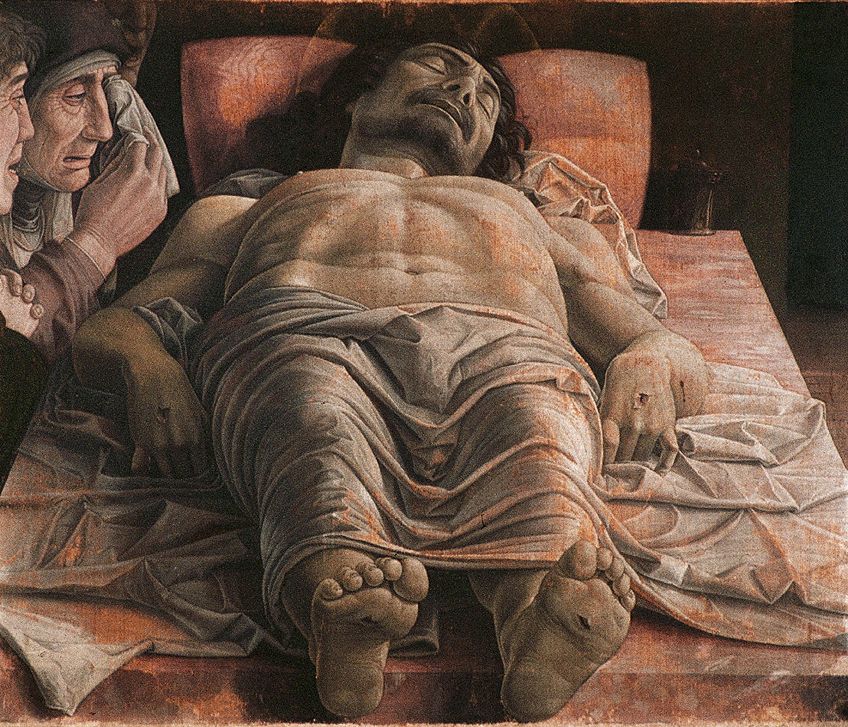
Another famous example is the dome of the Jesuit church, Sant’Ignazio (1685) by the Baroque painter, Andrea Pozzo. The dome is painted onto a flat ceiling and appears closer towards the nave of the church. Once in full view, it is noticeable that it is a complete optical illusion, executed with great skill.
This is just one example of many church domes and ceilings that portray a whole other world, mostly heaven. Viewers are transported and become a part of the vast scenes depicted above them. Furthermore, these Illusion paintings give a sense of wonder and awe, bringing visitors closer to something bigger than them.
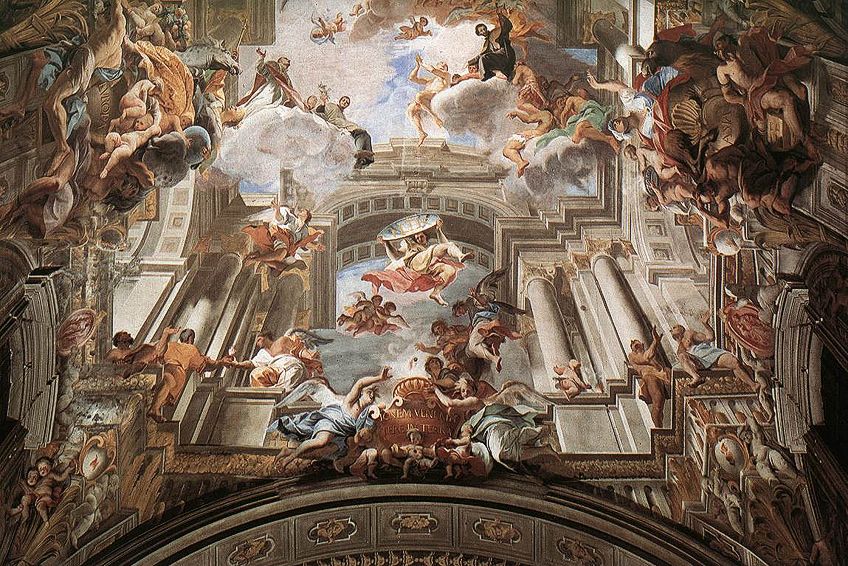
If we jump ahead into the modern period of visual arts, we will find Illusionism art taking on new meanings, such as in the art movement Surrealism, which was prevalent during the early 1900s. One of its famous painters, Salvador Dalí, created many illusion paintings that touched on deeper aspects of human consciousness.
As hyperrealistic as his paintings appeared, the subject matter itself was not realistic, which was the case for many of the true-to-life paintings from the Renaissance.
An example is Metamorphosis of Narcissus (1937), which centers around the Greek myth and story about the hunter called Narcissus who became obsessed with himself upon looking at his own reflection on the water. In this painting, Dalí depicts various figures and objects in an unknown landscape, and we, as the viewers, need to work to make some sense of what we are seeing. It is certainly a vivid three-dimensional world created on a flat two-dimensional canvas.
The Op Art movement from the 1960s is another example of 3D Illusion art at its finest.
The intention was to create optical illusions from geometric shapes that were “non-representational”, with colors (often black and white), forms, and patterns arranged in such a way that trick the brain and eyes, making it appear like it is moving or more dynamic than it really it is. The Op Art movement is believed to have been started by Victor Vasarely, a Hungarian French artist.

Vasarely also influenced various other artists, notably the British artist Bridget Riley. The 1965 exhibition, The Responsive Eye, at the Museum of Modern Art in New York, gave this movement more exposure to the public and in the art world, although it did receive critique by some as a movement.
Critiques of Illusion Art
Illusion art has not always been favored by everyone and has received some critique over the years. An example is from the Minimalist artist and writer, Donald Judd. Judd was active during the 1900s and passed away in 1994. His essay Specific Objects (1965) discussed and critiqued various artists and their works from the 1960s. His views on Illusion art were supportive of the fact that “actual space” was far superior to painting on a flat surface. He is quoted as writing:
“Three dimensions are real space. That gets rid of the problem of illusionism and of literal space, space in and around marks and colors – which is riddance of one of the salient and most objectionable relics of European art […] Actual space is intrinsically more powerful and specific than paint on a flat surface”.
Famous Illusion Paintings Artists
In the 20th century, Illusion art has reached new levels of expression with the assistance of technologies like computers that allow graphic design and the creation of new “virtual realities”. The utilization of more innovative spaces and surfaces such as buildings, pavements, streets, even the human body have become a canvas for Illusion art. Below, we look at some examples of optical illusion art from the Op Art movement, which set the stage, so to say, for other Illusionism art. We will also look at some examples of contemporary 3D Illusion art.
Victor Vasarely (1906 – 1997)
There are various examples of Illusion paintings by Victor Vasarely. One of his earliest is Zebra (1937), which depicts two Zebras intertwining with one another, their black and white stripes seemingly combining with one another. Vasarely depicted zebras due to the patterns on their bodies, which are easily suited to working with optical illusions.
Furthermore, the stark black background enhances their vivid appearance in the foreground.
Sophia (1954) depicts more lines, but in this instance, it is more abstract, with black lines appearing grid-like on a white background. Vega III is another black and white example of the artist’s checkerboard composition. The picture surface appears convex and concave in some areas when we view it, and this was created by various “distortions” made by the artist.
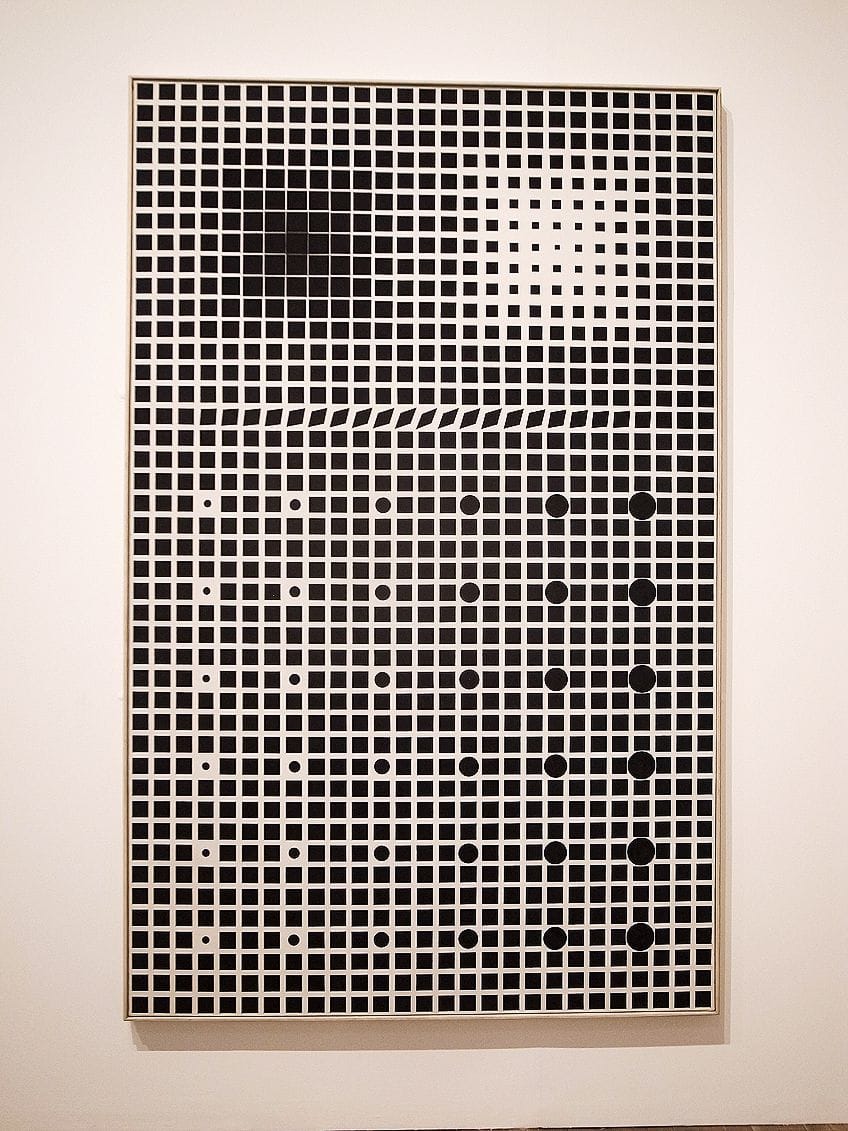
Vasarely also created illusion paintings in color, for example, his Vega Nor (1969) and Ambigu-B (1970). Both works show geometric shapes like spheres and hexagons. These are arranged in such a way that when we look at them, the parts become a dynamic shape created from the interaction of the different colors and shapes. This is especially notable in Ambigu-B, where the shapes appear in the background and foreground, and we seemingly see it all simultaneously shifting.
Bridget Riley (1931 to Present)
Bridget Riley also created black and white compositions, such as her early work titled, Kiss (1961), which depicts most of the surface as black with a white shape in the center, the top being crescent-shaped and the bottom being straight. It is almost as if the black spaces converge and meet at the white space, the edges of the black spaces forming the shape of the white space.
Movement in Squares (1961) depicts another black and white chequered pattern, however, here Riley played with the width of each square to create the optical illusion. The squares thin out near the middle of the composition, making the surface appear as if it is cascading downwards.

Some of Riley’s color compositions are Achaean (1981), which depicts various stripes running vertically along the surface. The colors were taken from her inspiration when she visited Egypt. With the interrelation of different colors and the varying shapes of the lines, the composition becomes a visual playground for the viewers. It was also suggested by the artist that viewers look at the painting horizontally to appreciate the dynamism of the warm and cool colors.
More Optical Illusion Art and Artists
When we look at contemporary Illusionism art, we have artists like Natalie Fletcher who creates an optical illusion on the human body. She paints various lines and patterns on the backs, which appear as if the image is caving into another space or hole. Fletcher also utilizes both color and black and white.
Hikaru Cho also paints on the human body, but she seemingly exposes another layer hidden underneath the skin. Some of her Illusion paintings depict a zipper on the back, which is unzipping another layer of the skin, revealing yet another layer with a zip. Another example depicts a face that is “cracked”, revealing another face underneath.
Street art and sidewalk chalk drawings are another unique example of 3D Illusion art and often display great talent from the 3D illusion artist.
The street artist referred to as “1010” is based in Hamburg, Germany, and creates exceptional optical illusions on buildings. With spiral-like shapes that appear to be almost like portals opening into another world, we are transfixed and tempted to walk right into the amoeba-like shapes.
Nikolaj Arndt creates chalk drawings on sidewalks, varying from lions to galloping horses. What makes Arndt’s illusions so unique is that people can become part of the images, for example, in some photographs a woman is seen walking the lion on a leash and a girl sits on the galloping horse as if she is riding it.
Continuing the Illusion
Illusionism art has certainly evolved since the ancient times of Greek and Roman art. In fact, Illusion art can be dated to before this period, from as early as ancient Egypt when people started depicting images on flat surfaces denoting the idea of space and three-dimensionality.
The surfaces that artists have utilized have changed from beautiful villa murals to present-day urban building walls and street pavements. Illusion art can fit almost anywhere and will keep us entertained in innovative ways, or should we say, “deceived”?
Take a look at our Optical Illusion art webstory here!
Frequently Asked Questions
What Is Illusion Art?
Illusion art is the depiction of an object on a flat, two-dimensional surface. The rendering of the object, still life, or scene is in a three-dimensional manner, which makes it appear real to the viewer.
When Did Illusion Art Start?
Illusionism art dates back as early as fresco mural paintings from Greek homes in the forms of still lifes as well as various scenes of people, and architectural structures that appear almost a part of the real architectural structures of the interiors. It has evolved over time and gained prominence during the Renaissance with artists mastering techniques like trompe l’oeil. In the contemporary day and age, we see Illusion art on buildings, pavements, as well as body art in the form of optical illusions.
How Is Illusion Created in Art?
There are various techniques that a 3D Illusion artist utilizes and combines to create and manipulate spaces to appear as if they move, change shapes, or perspectives. Techniques like trompe l’oeil and chiaroscuro (light and dark) are examples of how space, lines, shapes, and colors are coupled and overlapped in specific ways and sizes.
Isabella studied at the University of Cape Town in South Africa and graduated with a Bachelor of Arts majoring in English Literature & Language and Psychology. Throughout her undergraduate years, she took Art History as an additional subject and absolutely loved it. Building on from her art history knowledge that began in high school, art has always been a particular area of fascination for her. From learning about artworks previously unknown to her, or sharpening her existing understanding of specific works, the ability to continue learning within this interesting sphere excites her greatly.
Her focal points of interest in art history encompass profiling specific artists and art movements, as it is these areas where she is able to really dig deep into the rich narrative of the art world. Additionally, she particularly enjoys exploring the different artistic styles of the 20th century, as well as the important impact that female artists have had on the development of art history.
Learn more about Isabella Meyer and the Art in Context Team.
Cite this Article
Isabella, Meyer, “Illusion Art – Trompe-l’oeil, Hyperrealism, and Visual Trickery.” Art in Context. August 23, 2021. URL: https://artincontext.org/illusion-art/
Meyer, I. (2021, 23 August). Illusion Art – Trompe-l’oeil, Hyperrealism, and Visual Trickery. Art in Context. https://artincontext.org/illusion-art/
Meyer, Isabella. “Illusion Art – Trompe-l’oeil, Hyperrealism, and Visual Trickery.” Art in Context, August 23, 2021. https://artincontext.org/illusion-art/.


